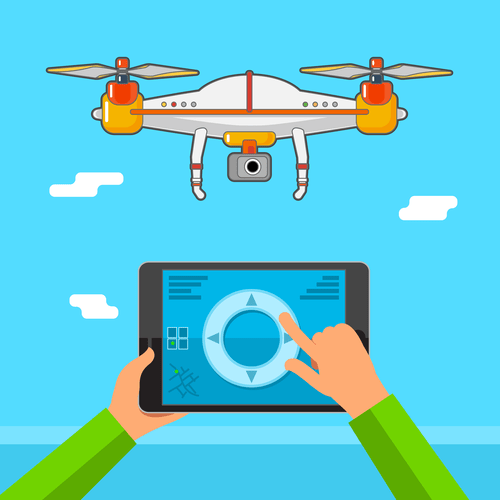In other words, we can say that a Jenkins pipeline is a collection of interconnected tasks that need to be accomplished in a particular order. Jenkins can operate on Windows, macOS, many Unix distributions, and Linux. You can use the Oracle JRE or OpenJDK if you have a Java 8 virtual machine. A Jetty application server often hosts Jenkins as a Java servlet. Not only that, but you can also use the Apache Tomcat Java application server. In recent years, Jenkins has been able to operate in a Docker container.
One of the advantages of Jenkins is that it can be extended using plugins. Plugins also contribute to the flexibility of Jenkins, as does the rich scripting and declarative languages that allow for highly custom pipelines. Since Jenkins is highly unopinionated, it fits well into most environments, including complex hybrid and multi-cloud systems. You can set up Jenkins to watch for any code changes in places like GitHub, Bitbucket or GitLab and automatically do a build a with tools like Maven and Gradle. You can utilize container technology such as Docker and Kubernetes, initiate tests and then take actions like rolling back or rolling forward in production.
Jenkins Differences
Pipeline steps are enclosed in curly brackets and specified as commands with arguments. The Jenkins server then reads the Jenkinsfile and runs the tasks, pushing the code from the committed source code to runtime in production. Organizations may use Jenkins to automate and speed up the software development process. Jenkins incorporates a variety of development life-cycle operations, such as build, document, test, package, stage, deploy, static analysis, and more.

This is helpful because it gives developers a chance to recover with minimal disruption to other processes in the pipeline. Jenkins was created by Kohsuke Kawaguchi, a developer at Sun MicroSystems. It was a tool to perform Continuous Integration (CI) by conducting automated tests on his code as changes were being made to it. Businesses are now rapidly adopting agile software development principles for their technology development needs and relying heavily on CI/CD to solve the issue. CI/CD narrows down the barriers between development and operational teams by enabling automation of building, testing, and deploying digital applications.
What is Jenkins Used For?
Jenkins is designed in such a manner that makes it relatively easy to distribute work across multiple machines and platforms for the accelerated build, testing, and deployment. The backbone of Jenkins is the community and the community members have been instrumental in the development (and testing) of close to 1500+ plugins available in the Update Center. Jenkins provides developers with an excellent framework from which they can develop and test new codes, resulting in the faster delivery of better quality software. By avoiding costly delays and log jams, developers can become an organization’s MVPs.

As a result, every commit made to the source code in the repository was built. Continuous Integration is a development practice in which the developers are required to commit changes to the source code in a shared repository several times a day or more frequently. Jenkins is an Open
Source continuous integration tool written in java that allows us to automate
the software development process, making sure that hire jenkins developers there is minimum involvement
from us. It integrates all the different parts of the development in one place,
this makes it easier to handle all the different parts of the software
development process. Jenkins is not simply limited to continuous integration and continuous delivery (CI/CD). As it is an automation server, you can automate every sort of development task through an extensive set of plugins.
How to use AWS instance as Runner in Gitlab?
It will decide this by checking which slave is idle or which slave has enough of a resource pool to execute the tasks. Jenkins is an open-source automation server written in java that automates parts of the software development process. It is used to build, test and deploy software continuously which makes it easier for developers to integrate changes to the project and makes it easier for users to obtain a fresh build. Jenkins provides hundreds of plugins to support building, deploying and automating any project. Jenkins is highly customizable & scalable, making it a versatile tool that supports various use cases and simplifies the software development process. A continuous delivery (CD) pipeline is an automated expression of your process for getting software from version control right through to your users and customers.

Jenkins does not allow for federation across servers resulting in performance issues. Lack of federation can also lead to a proliferation of independent Jenkins servers that are difficult to manage across a large enterprise. While it is easy to install (with simple to follow directions), production Jenkins can be difficult to implement. Developing production pipelines using Jenkinsfiles requires coding in either its declarative or scripting language.
Blue Ocean, the Jenkins GUI
Jenkins has a “Speed/Durability” label that allows you to maintain variables in scope for future usage while also allowing you to perform steps. However, if your pipelines spend practically all of their time waiting for a few shell/batch scripts to complete, it won’t help. The file archive is secure; you may clear your workspace and perform subsequent builds. For instance, suppose you create the jar/HTML/js file, which is crucial for deployment.
Davinder Passed his post-graduation with merit, he was the first one to submit his project on time, He is highly skilled in typing and research work. He is having more than 16 years of working experience as a freelance technical writer on creating keyword-rich content for clients in various technology. Jenkins runs parallel builds across several machines to decrease the total time consumed to complete the other activities. It has an enthusiastic developer community that frequently holds in-person and online meetings. I’ve shown examples where we specified a Docker container as the agent for a pipeline and where we ran Jenkins and Blue Ocean in a Docker container.
Jenkins and CI/CD
This kind of system limited the scope and number of features, thus slowing down the company’s development lifecycle. Deploying the application to the test environment is a complex, manually intensive process https://www.globalcloudteam.com/ that was quite prone to error. This meant that every attempt at deployment was a new experiment — a manual, error-prone process. Unit tests only test a developer’s perspective of the solution to a problem.
- Once we have added the Pipeline to the Jenkinsfile, click on ‘Open Blue Ocean’ link to run the job.
- You can call these slaves as also agents that execute tasks based on your configurations.
- It executes all the build jobs it receives from the Jenkins Master server.
- They are using Continuous Integration pipelines in order to facilitate automated builds.
- Before Jenkins, the best a developer could do to avoid breaking the nightly build was to write and test their code carefully and successfully on a local machine before committing it.
- All said and done, the Jenkins tool is great for the CI/CD process as it automates most of the tasks of DevOps and has the facility for others to add plugins as per requirements.
- Jenkins is a popular open source Continuous Integration (CI) and Continuous Delivery (CD) solution.
The files can contain different code and be very large, requiring multiple builds. However, a single Jenkins server cannot handle multiple files and builds simultaneously; for that, a distributed Jenkins architecture is necessary. Jenkins can be configured to run an initial suite of unit tests to ensure that the commit did not “break the build”.
UI Design Tools You Should Know About
It helps automate the parts of software development related to building, testing, and deploying, facilitating continuous integration and continuous delivery. It is a server-based system that runs in servlet containers such as Apache Tomcat. Jenkins is a continuous integration tool which means that it creates build jobs to perform multiple different tasks in different phases. To do this in an organization with multiple teams and multiple projects is difficult if you do so only using one server.
